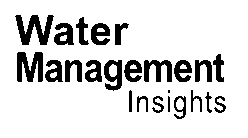In the heart of Vietnam, researchers are making waves in the water treatment industry, offering a glimmer of hope in the battle against antibiotic pollution. Thuy Giang Nguyen, a dedicated scientist from the Faculty of Environment at TNU – University of Agriculture and Forestry, has led a groundbreaking study that could revolutionize how we tackle contaminated water. Her work, published in the journal Materials Research Express, explores a novel approach to degrading tetracycline, a common antibiotic that poses significant threats to both human health and the environment.
Nguyen and her team have engineered a remarkable material: boron and manganese co-doped graphitic carbon nitride microtubes, affectionately dubbed CNBMn. This innovative material is designed to harness the power of visible light and peroxymonosulfate (PMS) to break down tetracycline efficiently. The results are nothing short of astonishing. The optimized CNBMn2 composition achieved an impressive 99% tetracycline removal within just 40 minutes under visible light, using a modest amount of catalyst and PMS.
The implications of this research are far-reaching, particularly for the energy sector. Advanced oxidation processes (AOPs) like the one developed by Nguyen’s team offer a sustainable and energy-efficient alternative to traditional water treatment methods. By leveraging visible light, these processes can significantly reduce the energy demands associated with water purification, making them an attractive option for industries looking to minimize their carbon footprint.
“The enhanced performance of CNBMn2 promotes the generation of reactive oxygen species, which are crucial for the degradation of tetracycline,” Nguyen explains. These species include sulfate radicals, hydroxyl radicals, superoxide radicals, holes, and singlet oxygen, all of which play a pivotal role in breaking down the antibiotic.
But the benefits don’t stop at energy efficiency. The CNBMn2 material also demonstrates remarkable stability, maintaining over 80% tetracycline removal over six consecutive cycles. This durability is a game-changer for industries that require reliable and long-lasting water treatment solutions.
The study also delves into the various factors that influence the system’s performance, such as PMS concentration, ion matrix, catalyst dosage, and initial pH. By understanding these variables, Nguyen and her team have laid the groundwork for optimizing the use of CNBMn2 in real-world applications.
So, what does this mean for the future of water treatment? The potential is immense. As industries strive to adopt more sustainable practices, technologies like CNBMn2 could become the gold standard for purifying antibiotic-contaminated water. The energy sector, in particular, stands to gain significantly from these advancements, as they align with the growing demand for eco-friendly and energy-efficient solutions.
Nguyen’s work, published in Materials Research Express, is a testament to the power of innovation in addressing pressing environmental challenges. As we look to the future, it’s clear that the synergy between advanced materials and sustainable technologies will play a crucial role in shaping a cleaner, healthier world. The journey towards purer water is far from over, but with pioneers like Nguyen leading the way, the path forward is brighter than ever.
